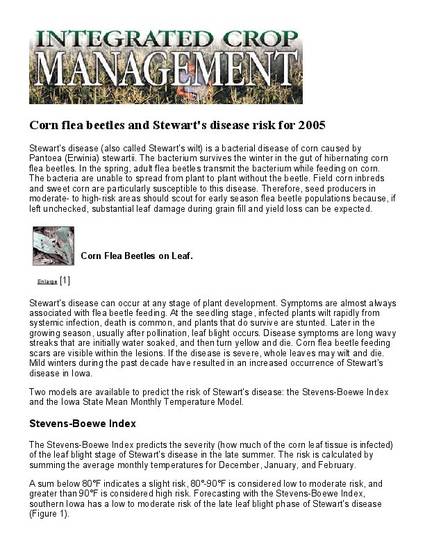
Article
Corn flea beetles and Stewart's disease risk for 2005
Integrated Crop Management News
Document Type
Article
Publication Date
4-11-2005
Disciplines
Abstract
Stewart's disease (also called Stewart's wilt) is a bacterial disease of corn caused by Pantoea (Erwinia) stewartii. The bacterium survives the winter in the gut of hibernating corn flea beetles. In the spring, adult flea beetles transmit the bacterium while feeding on corn. The bacteria are unable to spread from plant to plant without the beetle. Field corn inbreds and sweet corn are particularly susceptible to this disease. Therefore, seed producers in moderate- to high-risk areas should scout for early season flea beetle populations because, if left unchecked, substantial leaf damage during grain fill and yield loss can be expected.
Copyright Owner
Iowa State University
Copyright Date
2005
Language
en
File Format
application/pdf
Citation Information
Marlin E. Rice, Richard O. Pope, Alison E. Robertson, Forrest W Nutter, et al.. "Corn flea beetles and Stewart's disease risk for 2005" (2005) Available at: http://works.bepress.com/forrest_nutter/6/
